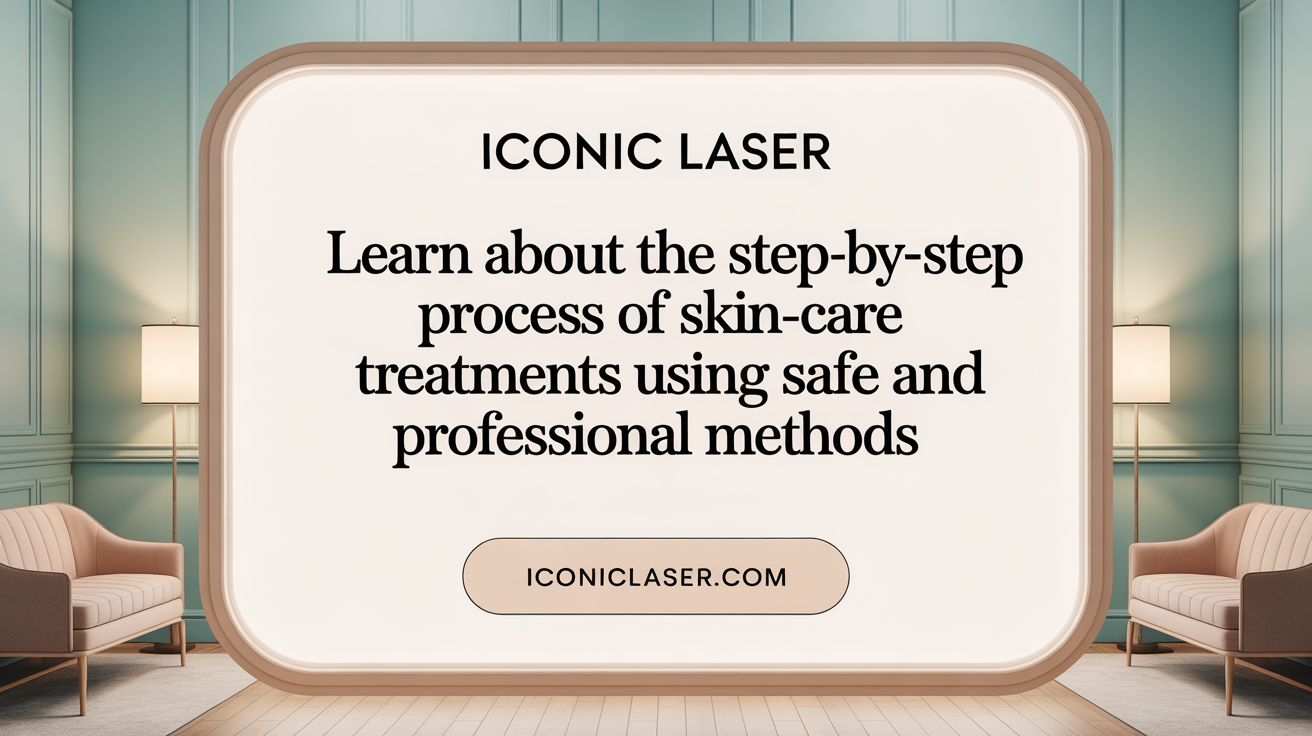Understanding Microneedling and Its Role in Skin Rejuvenation
Microneedling, also known as collagen induction therapy, has gained prominence as a minimally invasive procedure designed to improve skin texture and appearance by harnessing the body’s natural healing mechanisms. This treatment utilizes tiny needles to create controlled micro-injuries that stimulate collagen and elastin production, vital proteins for youthful and resilient skin. Suitable for a variety of skin concerns—from acne scars to fine lines—microneedling offers an effective and safe alternative to more aggressive skin treatments. This guide explores the science behind microneedling, treatment protocols, expected outcomes, safety considerations, and how to choose the right professional for your skin goals.
What Is Microneedling and How Does It Work?

What is microneedling and how does it work?
Microneedling, also called collagen induction therapy, is a minimally invasive dermatology treatment that uses fine needles to create tiny punctures in the skin. These micro-injuries stimulate the skin’s natural healing process, leading to increased production of collagen and elastin, proteins crucial for skin firmness, elasticity, and youthful appearance.
The procedure typically involves a device with multiple small needles attached to rollers or a pen-like instrument. When moved across the skin, these needles create controlled micro-injuries, primarily targeting the dermis—the deeper layer of the skin—while sparing the outermost layer, the epidermis.
This controlled wounding cascade triggers a series of biological responses, including tissue regeneration, neovascularization (formation of new blood vessels), and skin remodeling. As a result, the skin becomes firmer, plumper, and more even in tone.
In addition to collagen stimulation, microneedling enhances skin absorption. The microchannels created allow topical serums, such as hyaluronic acid or vitamin C, to penetrate deeper into the skin, boosting their efficacy and promoting faster healing.
The overall benefits include improvements in skin texture, reduction of scars (such as acne scars), wrinkles, sun damage, and uneven skin tone. When performed by trained professionals, microneedling offers a safe, minimally invasive alternative to more aggressive procedures like laser resurfacing or chemical peels.
Results improve gradually over weeks following treatment, with multiple sessions typically recommended for optimal outcomes. Proper pre- and post-treatment care are essential to maximize benefits and minimize side effects like redness or swelling.
In summary, microneedling is an effective, safe way to stimulate natural skin rejuvenation through the body's own healing processes, producing healthier, more resilient skin.
Clinical Applications and Benefits of Microneedling

What are the benefits and clinical applications of microneedling?
Microneedling, also known as collagen induction therapy, provides a wide array of benefits for skin health and appearance. It stimulates the production of collagen and elastin, two proteins essential for maintaining skin elasticity, firmness, and smoothness.
Clinically, it is highly effective in treating numerous skin conditions. These include acne scars, surgical scars, stretch marks, rhytides (fine lines and wrinkles), hyperpigmentation, melasma, enlarged pores, and uneven skin tone. Its ability to promote skin remodeling through a wound-healing process results in significant improvements in skin texture and overall appearance.
Beyond skin rejuvenation, microneedling shows promising results in hair loss therapies, specifically for androgenetic alopecia, by stimulating blood circulation and nourishing hair follicles.
The procedure also enhances transdermal drug delivery, increasing the absorption of topical treatments such as vitamins, hyaluronic acid, and growth factors, which further boosts skin healing and appearance.
The versatility of microneedling is complemented by its safety profile as a minimally invasive treatment. Patients generally experience minimal downtime, with side effects like redness and swelling typically resolving within a few days.
Recent advancements, including combination treatments with platelet-rich plasma (PRP), radiofrequency, and specialized serums, have further expanded its clinical potential. These improvements lead to faster healing, better outcomes in scar and wrinkle reduction, and enhanced skin rejuvenation.
Overall, microneedling stands out as a flexible, safe, and effective option in dermatology and aesthetic medicine, suitable for a diverse range of skin concerns and patient profiles.
| Condition | Main Benefits | Additional Notes |
|---|---|---|
| Acne scars | Significant scar reduction, improved skin texture | Series of 3-5 treatments often recommended |
| Wrinkles and rhytides | Diminished fine lines and wrinkles, increased skin elasticity | Optimal needle depths vary; multiple sessions needed |
| Hyperpigmentation | Reduction in dark spots and melasma | Combination with depigmenting agents enhances results |
| Pore size reduction | Minimized enlarged pores | Suitable for face and body areas |
| Stretch marks | Improved appearance and skin firmness | Deeper needle depths targeted for scars |
| Hair loss | Stimulates blood flow and hair follicle health | Shows promising outcomes in androgenetic alopecia |
| Skin rejuvenation | Enhanced skin tone, texture, and overall youthful appearance | Mostly minimal side effects, high patient satisfaction |
Search for more information
You can explore further the
The Microneedling Treatment Process and Protocols

What is the typical microneedling treatment process and protocols?
The process starts with meticulous skin preparation, including cleansing the area thoroughly and avoiding irritants like retinoids, exfoliants, and sun exposure for several days beforehand. Patients are often advised to hydrate well and may need to discontinue blood-thinning medications if recommended by their healthcare provider.
On treatment day, a healthcare professional applies a topical anesthetic, such as lidocaine, to numb the skin, significantly reducing discomfort during the procedure. Some practitioners may also draw blood to prepare Platelet Rich Plasma (PRP) for combination treatments, which can enhance healing and results.
The clinician then selects an appropriate device for microneedling, commonly a Dermapen or a dermaroller. These devices feature fine needles that puncture the skin surface, creating microchannels or micro-injuries in a controlled manner. The depth of needle penetration is customized based on the skin concern and specific area being treated. For example, shallow depths around 0.5 mm are suitable for improving skin texture and product absorption, while deeper depths up to 2.5 mm are used for treating scars and stretch marks.
During the procedure, the device is systematically moved across the skin, sometimes with the application of serums like hyaluronic acid or vitamin C. These topical agents can penetrate more effectively through the microchannels, amplifying the treatment's rejuvenating effects.
Treatment sessions generally last between 30 minutes to an hour, depending on the size of the area treated. Multiple sessions—typically 3 to 5—are recommended, spaced about 4 to 6 weeks apart. This spacing allows the skin ample time to heal and collagen to build, leading to more noticeable and lasting results.
Post-treatment, the skin may remain red and slightly tender, mimicking a mild sunburn, for several days. Patients are advised to avoid sun exposure, use broad-spectrum sunscreen, and follow gentle skincare routines—keeping the skin clean, moisturized, and protected to support healing.
Overall, adherence to these protocols ensures safety, minimizes risks, and promotes optimal results in skin rejuvenation, scar reduction, and overall skin health.
Expected Improvements and Long-Term Results from Microneedling

What are the expected results and improvements from microneedling?
Microneedling consistently enhances skin texture and firmness, effectively reducing the appearance of scars, fine lines, and hyperpigmentation. Patients often notice smoother, more even-toned skin after several weeks of treatment. Visible improvements include diminished scars, wrinkles, pore size, and uneven pigmentation.
Initially, right after the procedure, the skin may appear red, tender, and slightly swollen. These effects are temporary, typically resolving within 1 to 3 days. Some patients report feeling skin brightness and smoothness almost immediately post-treatment, offering a quick boost in skin radiance.
Timeline of collagen and elastin increase
The core benefit of microneedling stems from increased collagen and elastin production. Significant biological activity occurs within 2 to 6 weeks after treatment, as the skin responds to controlled micro-injuries. During this period, collagen levels rise, leading to skin tightening and improved elasticity.
As collagen and elastin continue to build, aesthetic improvements become more apparent. Patients typically observe noticeable results around the 4-week mark, with optimal collagen synthesis achieved by 6 weeks. For deeper skin issues such as scars and stretch marks, full results may unfold over several months.
Visible improvements in scars, wrinkles, and tone
With multiple sessions spaced 4 to 6 weeks apart, most individuals see substantial improvements. Acne scars become less prominent, wrinkles are softened, and skin tone evens out. Pore size diminishes, and overall skin texture becomes smoother. Melasma and sun damage signs also tend to fade over time.
The process involves stimulating the body's natural healing, which increases collagen, elastin, and skin renewal. These biological changes lead to a more youthful, refreshed appearance that persists with proper skin care.
Longevity of treatment results
The benefits of microneedling are not permanent but can last from 6 to 24 months. Duration depends on skin aging rate, lifestyle, and post-treatment skincare. To maintain improvements, ongoing care with sunscreens, moisturizers, and periodic booster treatments is recommended.
Customized maintenance plans, often including annual or bi-annual sessions, can prolong the benefits, addressing new skin concerns as they arise.
Importance of multiple sessions and maintenance
Most effective microneedling outcomes come from a series of 3 to 6 treatments, scheduled every 4 to 6 weeks. This approach ensures continuous collagen stimulation, deeper tissue remodeling, and more durable results.
Consistent post-treatment skincare, sun protection, and avoiding skin irritants help sustain gains. Over time, these practices support prolonged skin health and youthful appearance, making microneedling a valuable ongoing skin rejuvenation strategy.
Safety Considerations, Side Effects, and Risks of Microneedling

What are the safety considerations, potential side effects, and risks of microneedling?
Microneedling is widely regarded as a safe and minimally invasive procedure when performed by trained healthcare professionals. It involves creating tiny controlled punctures in the skin, which stimulate natural healing and collagen production. Proper sterilization of equipment, adherence to hygiene standards, and appropriate technique are essential to minimize risks.
Common side effects include redness, swelling, tenderness, dryness, peeling, and minor bruising. These effects typically resolve within a few days to a week, with most patients experiencing only mild and transient discomfort. Applying soothing creams and avoiding harsh skincare products can help manage these symptoms.
While rare, more serious complications can occur. These include skin infection, hyperpigmentation, scarring, and allergic reactions, especially if the procedure is not performed under sterile conditions or if post-treatment care guidelines are ignored. Deeper or improper needle use might lead to skin damage, bleeding, or prolonged irritation.
It is crucial to disclose medical history before treatment, particularly concerning active skin infections, certain skin conditions (like eczema or psoriasis), or blood disorders. Avoiding microneedling during active infections or if prone to keloid formation helps prevent adverse outcomes.
Post-treatment, following prescribed aftercare protocols significantly reduces the risk of complications. This includes keeping the skin clean, avoiding makeup and irritating skincare products, protecting the skin from excessive sun exposure, and maintaining hydration. Wearing broad-spectrum SPF and staying away from tanning beds are vital to protect the skin's healing process.
In summary, microneedling is safe when done at reputable clinics with trained professionals. Awareness of potential side effects and risks, along with strict hygiene and proper aftercare, ensures optimal results and minimizes adverse events.
Post-Treatment Care and Skin Healing After Microneedling
What is the typical post-treatment care and healing timeline after microneedling?
After undergoing microneedling, most patients encounter a set of common skin reactions which indicate that the skin is healing properly. These include redness, swelling, and increased sensitivity, typically lasting between 24 to 48 hours. Some individuals may also notice peeling or flakiness that begins around days 3 to 5 post-procedure.
During the initial days of recovery, it is important to keep the skin clean. Use gentle, non-irritating cleansers and avoid harsh skincare products such as retinoids and acids. Applying soothing products like aloe vera or calming masks can help reduce discomfort and inflammation. Protecting the skin from sun exposure is crucial; using a broad-spectrum SPF and avoiding direct sunlight helps prevent pigmentation changes and irritation.
To support healing, refrain from applying makeup or active skincare ingredients until your skin's condition improves. Physical activities that cause sweating and heat should be minimized during the first few days. Most of the redness and swelling diminish within the first 2 days, and by days 5 to 7, the skin often feels smoother, with reduced redness.
Full surface healing of the skin generally occurs within 5 to 7 days. However, collagen remodeling and the full benefits of the treatment develop over several weeks, often taking between 4 to 6 weeks, especially when multiple sessions are part of the treatment plan. It's recommended to maintain hydration, continue using sun protection, and follow your provider’s guidelines to optimize results.
Adhering to proper post-treatment care not only accelerates healing but also enhances the overall effectiveness of microneedling, leading to smoother, more youthful-looking skin.
Choosing Qualified Professionals for Safe and Effective Microneedling
How can one choose qualified professionals for microneedling treatments?
Selecting a qualified practitioner is essential to ensure safety and optimal results with microneedling. Start by verifying their medical credentials, such as board certification in dermatology or training certifications from reputable organizations like SkinPen or Dermapen. A clinician’s experience is equally important; look for someone with a strong track record of successful treatments and positive patient reviews.
Ensure the clinic follows strict safety protocols by checking that they use FDA-approved devices and adhere to hygiene standards. Proper sterilization of equipment and the use of disposable needles help prevent infections and complications.
A comprehensive consultation is crucial before the procedure. During this session, the practitioner should evaluate your skin type, discuss your goals, and design a personalized treatment plan tailored to your needs.
Additionally, consider their commitment to ongoing education and professional development, memberships in reputable industry groups, and the cleanliness and accreditation status of their practice environment.
Choosing a certified, experienced, and hygienic professional who offers detailed consultations will significantly enhance the safety and effectiveness of your microneedling experience.
Types of Microneedling Procedures and Cost Considerations
There are several procedures available within the realm of microneedling, each varying in technique, technology, and cost. The most common options include manual dermarollers, automated devices like the Dermapen®, radiofrequency (RF) microneedling, and combination treatments such as microneedling with platelet-rich plasma (PRP).
Manual dermarollers involve rolling tiny needles across the skin, creating micro-injuries that stimulate collagen production. They are generally more affordable, with costs typically ranging from $50 to $300 per session. However, their consistency and depth control can vary depending on user skill.
Automated devices like the Dermapen® or SkinPen® offer more precision, adjustable needle depths, and customizable treatment patterns. These devices are operated by trained professionals and usually cost between $600 and $1,200 per session. They allow for controlled depth penetration (from 0.5 mm to 2.5 mm), which enhances safety and results.
Radiofrequency (RF) microneedling combines traditional needle punctures with heat energy to further stimulate collagen synthesis. This advanced technology tends to be more costly, with prices often exceeding $1,000 per session, but it can deliver more significant skin tightening effects.
Combination therapies such as microneedling with platelet-rich plasma (PRP) involve injecting the patient's own growth factors into the skin, which can boost healing and improve outcomes. These treatments add to the overall expense, with PRP procedures often costing between $1,500 and $2,400 per session.
Regarding the number of treatments, most patients undergo between three and six sessions spaced four to six weeks apart for optimal results. Maintenance treatments might be necessary every six months to a year to sustain improvements.
It’s important to note that costs vary based on geographic location, provider expertise, and the size of the area treated. Patients should also expect that cosmetic treatments like microneedling are usually not covered by insurance but may be eligible for savings through health savings accounts.
In summary, while basic manual treatments are more budget-friendly, professional automated and RF microneedling options offer enhanced control and results, with costs reflecting their technological advantages and complexity.
Achieving Lasting Skin Renewal Through Microneedling
Microneedling stands out as a scientifically supported, versatile, and minimally invasive treatment that harnesses the body’s natural healing to rejuvenate skin across multiple concerns. By carefully following treatment protocols, selecting qualified professionals, and committing to recommended multiple sessions alongside attentive post-care, individuals can experience substantial improvements in scars, wrinkles, and overall skin quality. While safety and proper technique are paramount to minimizing risks, advances in device technology and combination therapies continue to enhance effectiveness and patient satisfaction. Ultimately, microneedling offers an accessible pathway to healthier, smoother, and more youthful skin with lasting results when approached with knowledge and care.
References
- Microneedling: A Review and Practical Guide - PubMed
- The Ultimate Guide to Microneedling - MetroDerm.org
- An In-Depth Guide to MicroNeedling: Unmasking the Transformative ...
- Mastering Microneedling: A Comprehensive Guide to Safe and ...
- Microneedling: What It Is, Uses, Benefits & Results - Cleveland Clinic
- The Ultimate Guide To Microneedling: Benefits, Process, And Results
- Microneedling: A Review and Practical Guide - ResearchGate
